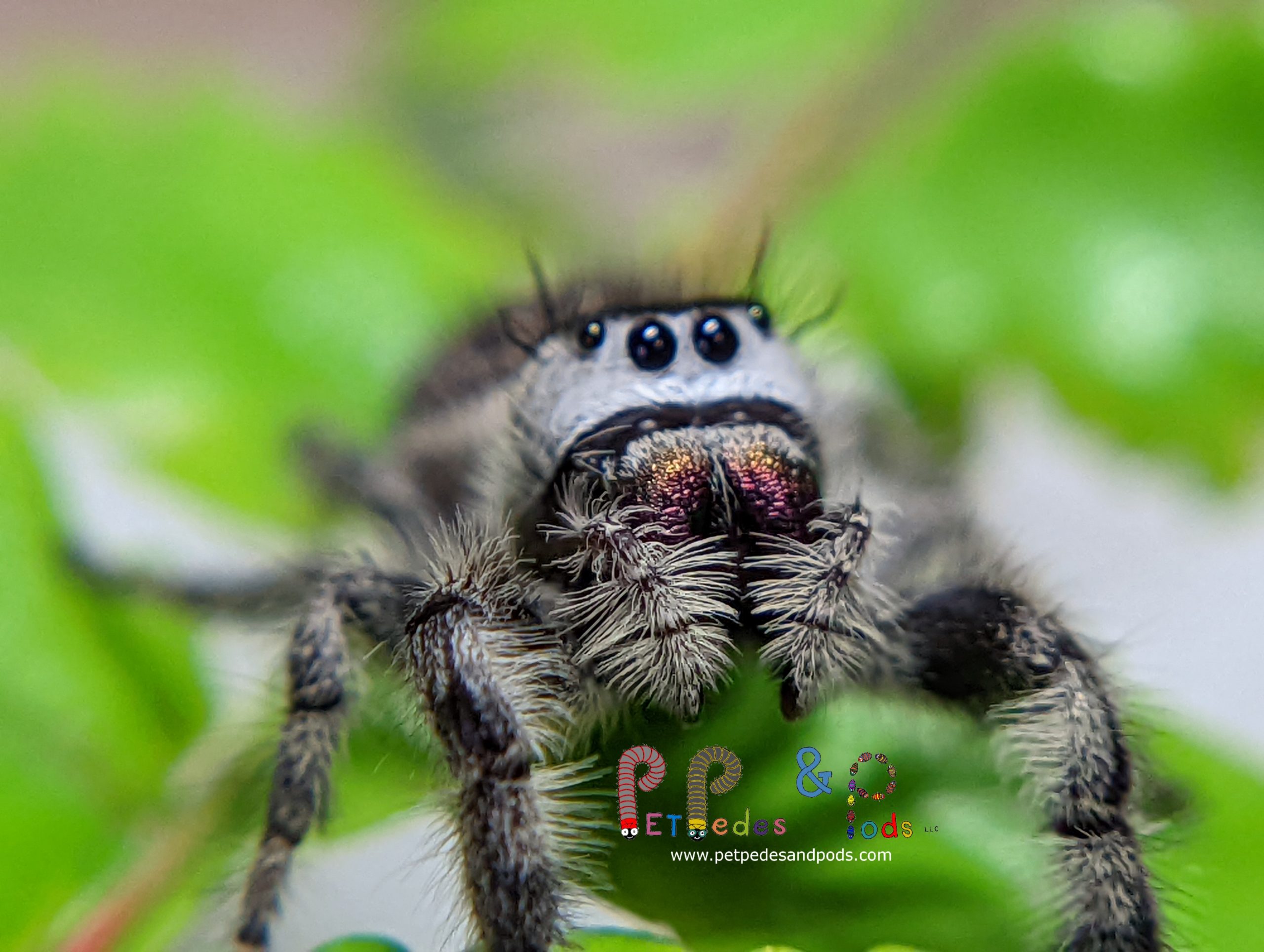Housing: Jumping spiders should be housed in an enclosure that offers them room to climb and explore, but is not so large that they feel insecure, and cannot find food when offered. It’s best to start slings in smaller enclosures and step the size of the enclosure up with the spider, rather than housing a baby spider in an adult sized enclosure. Make sure the vents are spider proof to prevent escape! Enclosures should open from the bottom or size (for example, an upside down deli cup works well) because the spider will build a hammock at the top of the enclosure, so top opening enclosures will disturb the spider’s hammock every time it’s opened, which should be avoided. Each spider should be house separately.
Feeding: Babies should be fed every day or every other day. As the spider grows, time in between feedings can be increased. Our spiders are typically on a 3x a week feeding schedule by the time we sell them. You can monitor their abdomen to see if they need fed. Do not feed if the spider is getting ready to molt (the spider will be fat, and usually seal themselves up in their hammock). Once the spider has molted, food can be offered once they come out of their hammock.
Our spiders are typically on fruit flies when we sell them. Keep the size of the prey about the same size or smaller than your spider. You can step them up to pinhead crickets, black soldier fly larvae, and small mealworms. As your spider grows, increase the size of the prey.
Water: It’s important to provide water for drinking and to keep humidity levels up in the enclosure, especially leading up to and during a molt. It’s also important to make sure that any mister you use has very fine (small) droplets so that your spider can’t get stuck in the droplet and drown. DO NOT provide a water dish as this is a hazard to your spider. Moss, small amounts of substrate, or moist paper towel can be used at the bottom of the enclosure to keep humidity levels up.
Light: Jumping spiders are diurnal, and are active hunters. They need bright, indirect light or they may stop eating. Never put your spider in direct sun or they can overheat.
Handling: Jumping spiders are usually ok with being handled. It’s important to work with them over time to get them used to you. Some jumping spiders may never like being held, but captive bred jumpers are typically much easier to get used to regular handling. Always be careful not to crush or drop your spider!
Additional Information: Baby spiders are very delicate. In nature, only a few from each clutch may survive to adulthood. Even in captivity, mortality and die off are extremely high during the first initial molts. This is why we keep our babies through the first 4+ instars (usually more, through 2 or 3 months) to make sure they are as stable as possible before selling them as pets. Even so, sometimes baby spiders may die for no apparent reason, even with the best husbandry. Please be aware of this when purchasing a baby spider. We do our best to set each baby up for success, but there is still always risk when raising small invertebrates. For these reasons, we do not guarantee our spiders past live arrival.

